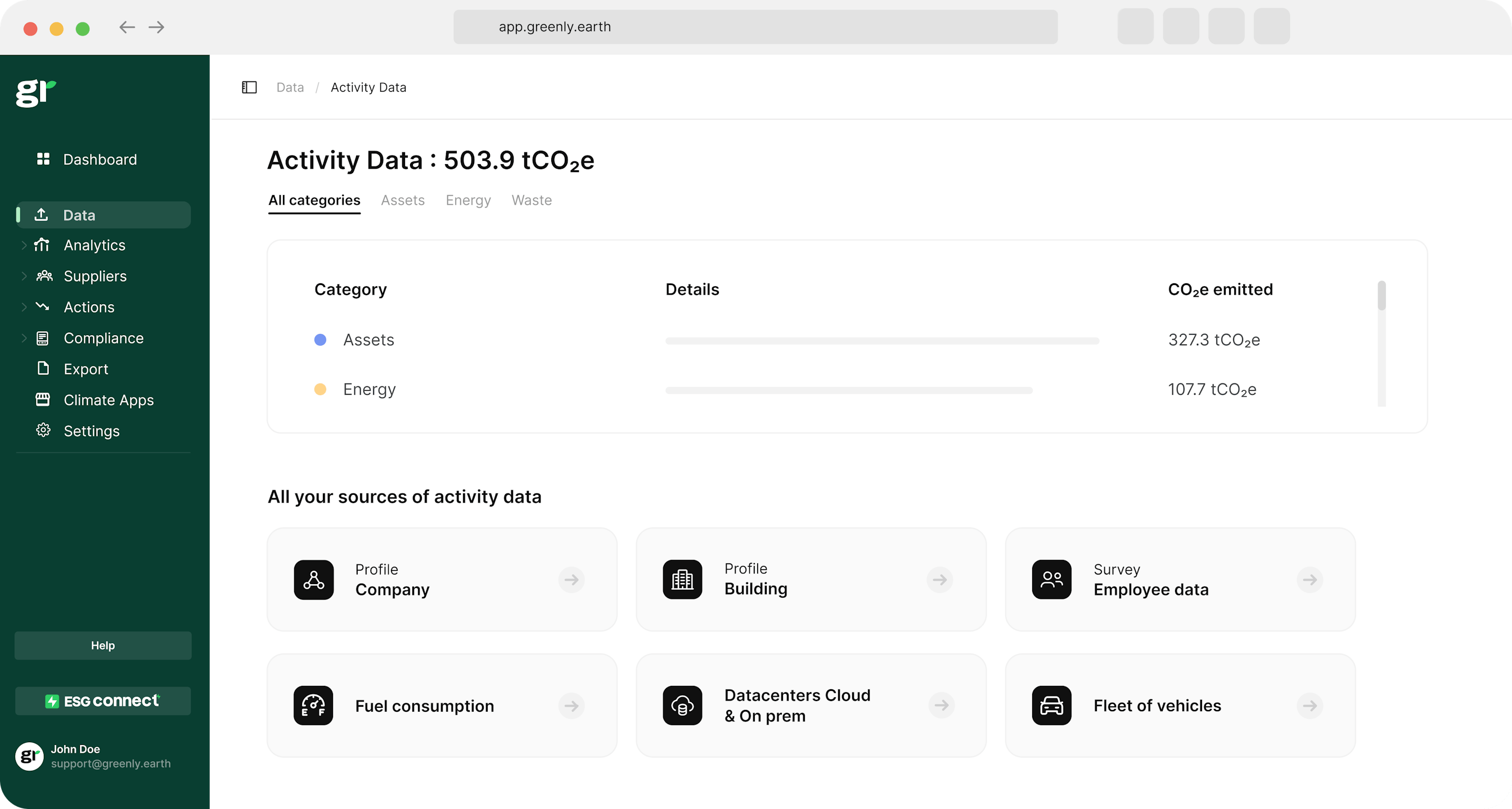ESG / CSR
Industries
What is Microplastic?
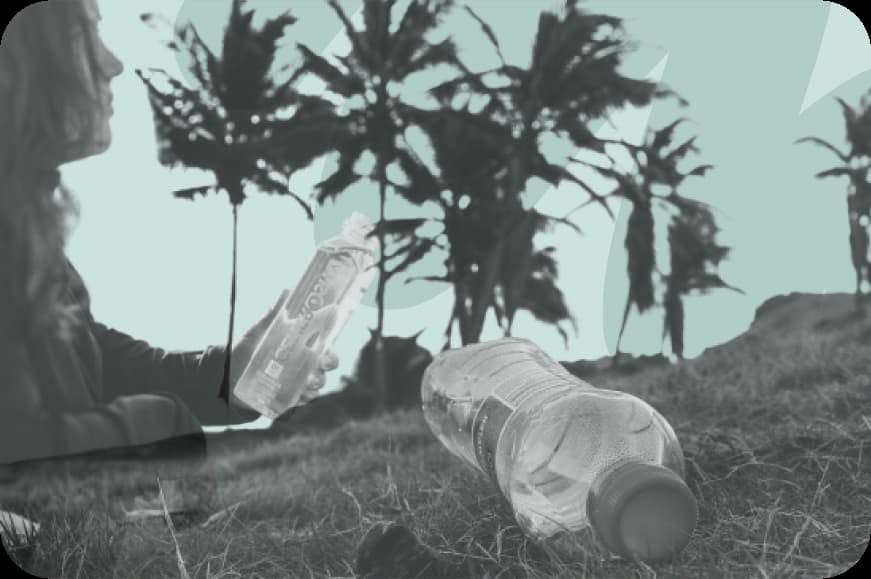


All of the sudden, certain elements and materials are considered as a hard pass in the midst of climate change and the push for greater sustainability – such as people switching to reusable water bottles, shopping bags, and remaining wary of fast fashion to avoid hazardous materials like microplastic.
Microplastics can have a profound impact on the environment, ocean life, and even the human body – making microplastic a new cause for concern in our world.
In this article, we’ll explain what microplastic is, the harmful effects of microplastic, and how we can mitigate the use of microplastic.
What are microplastics?
In simple terms, the definition of microplastics are small, microscopic particles smaller than 5 millimeters in diameter – and can easily end up in water filtration systems, oceans, and even our food.
💡 Microplastics are synthetic compounds that have low-to-no biodegradable properties, making them easy to pass through our food chains – such as in the fish we eat.
What are the two types of microplastics?
There are two main types of microplastics:
- Primary Microplastics – This type of microplastic is purposely manufactured in small sizes and used in popular cosmetics such as makeup and skincare. One of the best examples of commonly used microplastics includes microbeads, which are often used in face wash to help exfoliate the skin.
- Secondary Microplastics – This type of microplastic is created when larger plastic products break down into smaller fragments, such as a single-use plastic water bottle or thin plastic being left out into the sun for too long. This can also include plastic that is breaking down from wear-and-tear, such as a fish net or a plastic toy.
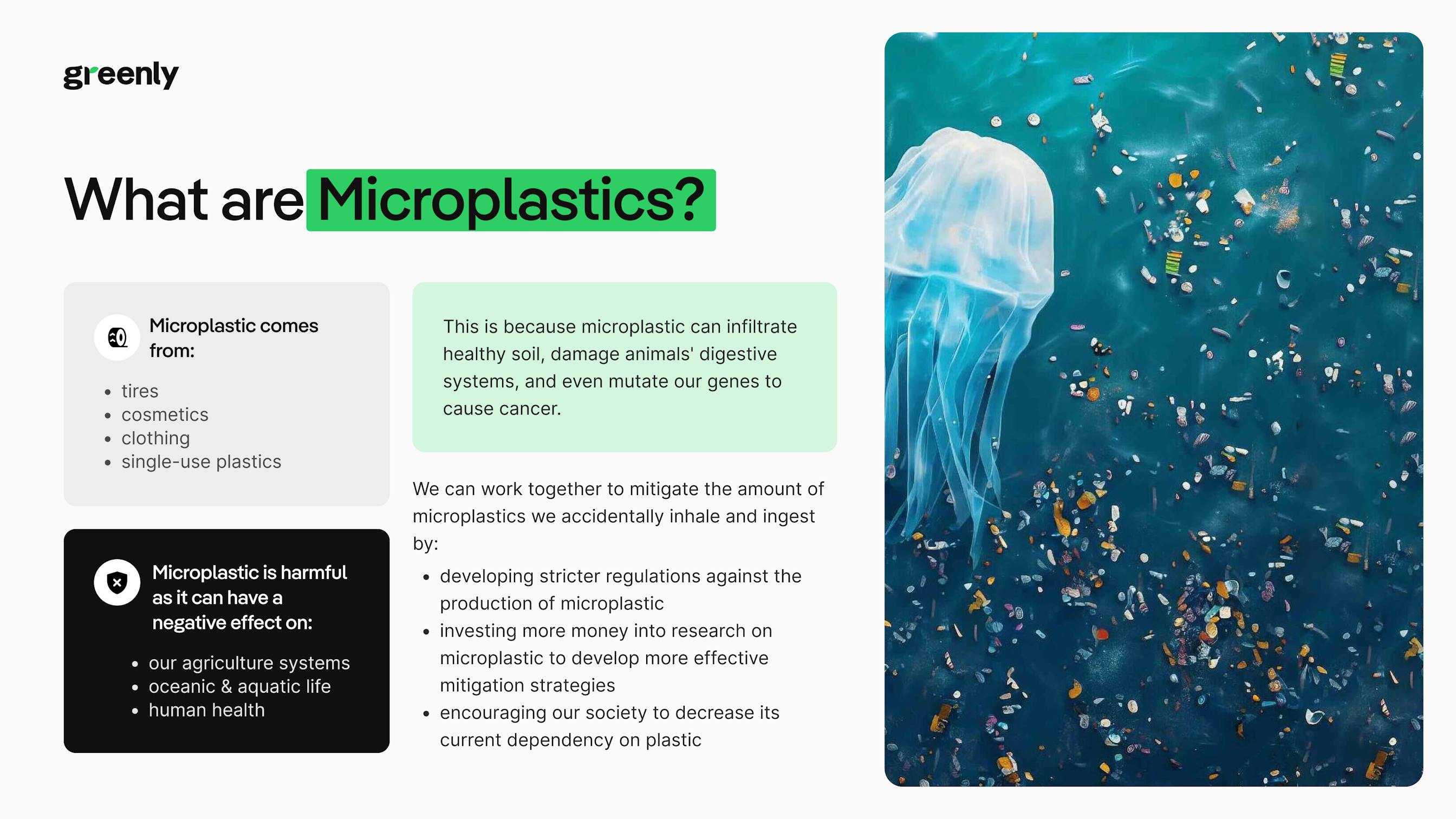

Where does microplastic come from?
Microplastic can come from the following sources:
- Clothing – Textile fibers from synthetic clothing which release microplastic after washing, which has caused people to become more aware of the importance of sustainable fashion.
- Tires – Particles released from tires from driving, where up to 78% of microplastics found in the ocean are from synthetic tire rubber.
- Single-Use Plastic – Plastic bags or water bottles which easily breakdown over time, meaning that we could be eating snacks out of an old, single-use plastic bag and accidentally be exposing ourselves to microplastic.
- Cosmetics – Skincare, makeup, or other cosmetic products can contain microbeads which can end up in our bodies or landfill.
👉 Ultimately, microplastic can be found in many facets of our every day life – demonstrating how microplastic is already intertwined with our daily routines – which makes it all the more difficult to avoid microplastic entirely.
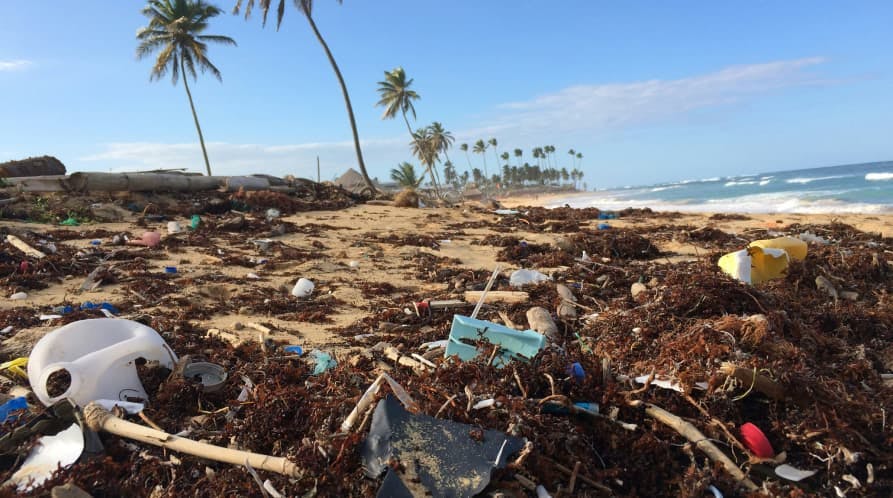
Why is microplastic harmful?
There are several reasons why microplastic is harmful, but it is mostly detrimental to the human body, agriculture, our oceans and bodies of water such as the Great Lakes, and aquatic life – as ingesting microplastic can release endocrine disrupting chemicals.
💡 As microplastic can be found in oceans, on remote islands, and even in polar regions – their damaging effects span the globe, making it all the more imperative to understand the effects of microplastics and eradicate them to the best of our ability.
Here’s a breakdown of the different ways in which microplastic can be harmful:
Human Health
When humans consume microplastic, it can have an impact on their endocrine system – which would in turn have an effect on reproductive systems, incite weight gain, and even cause cancer.
Furthermore, microplastic doesn’t cause harm when ingested, but it has an impact on our air quality – as microplastics have been shown to contribute to excess greenhouse gas emissions.
💡 In fact, plastics as a whole will emit 1.34 gigatons per year by 2030 and a whopping 2.8 gigatons per year by 2050 – illustrating why our newfound concern regarding the consumption of microplastic is warranted.
Agricultural Impact
As microplastic has a way of ending up anywhere, it can even find its way into soil – where microplastic can change the structure of the soil such as its porosity.
This means that the health of various soil organisms may be compromised and contaminated – overall making it more difficult to warrant a fruitful, quality harvest of produce.
👉 In order to combat the negative effects of microplastic in soil from fertilisers or irrigation with polluted water resources, some farmers have adapted climate smart farming tactics to avoid the potential impacts of microplastic.
Oceans
Microplastic can easily contaminate oceans, as 12 million tons of plastic finds its way into the ocean every year – meaning that marine animals often mistake microplastic for food, which can ultimately disrupt food chains and marine ecosystems.
Since microplastic absorbs heavy metals and pesticides once oceanborne – it can act as a toxic carrier – ending up on oceanshores and creating a profound impact on surrounding biodiversity. This is because microplastic can interfere with both plankton and the natural carbon cycle, which are essential for oceanic health.
👉As the production of primary and secondary microplastic continues to increase, it is becoming increasingly difficult to mitigate the harmful effects of microplastic for oceanic habitats.
Aquatic Life
Since aquatic wildlife often mistakes microplastics for food, it not only disrupts the food chain – but can cause severe harm and even death to marine life.
For example, whenever fish, turtles, or birds such as seagulls eat microplastic, it can block their digestive tracks and reduce their appetite – leading to accidental starvation and malnourishment.
Besides digestive issues, microplastic is also linked to behavioral and reproductive problems for aquatic life – meaning that they could accidentally pass on these issues to their offspring and create long-standing, challenging-to-reserve problems for their species as a whole.
These pervasive effects highlight the urgent need for reducing plastic waste and improving waste management systems.
👉 Overall, microplastic has a colossal impact on our health, the environment, and aquatic life – highlighting the need for improved efforts to encourage mitigating microplastic.
The table below will delve into the additional ways that microplastics are harmful:
| Negative Effect | Description |
|---|---|
| Stifles Innovation in Sustainable Products | Microplastics create challenges for businesses aiming to innovate in the sustainability space. For instance, new biodegradable materials or eco-friendly products may face increased scrutiny to ensure they do not unintentionally contribute to microplastic pollution during degradation, delaying their development and adoption. |
| Prevents True Circular Economies | Microplastics complicate recycling processes, as they contaminate recycled materials, making it difficult to create high-quality, reusable products. This undermines efforts to achieve a fully circular economy by reducing the value and usability of recycled goods. |
| Hampers National Sustainability Goals | Many countries striving to meet sustainability goals find it difficult to track and manage microplastic pollution. This invisible pollutant undermines clean water and air initiatives, making it harder for nations to present themselves as truly sustainable. |
| Discourages Investment in Clean Technologies | Microplastic pollution requires costly research and mitigation efforts, diverting resources away from investments in clean energy or alternative materials. The ongoing issue also increases investor hesitation, fearing that new technologies could exacerbate pollution problems rather than solve them. |
| Complicates International Trade Policies | The presence of microplastics in goods like textiles or cosmetics leads to stricter trade regulations. Countries may impose bans or additional certifications, increasing the complexity and cost of exporting sustainable products. |
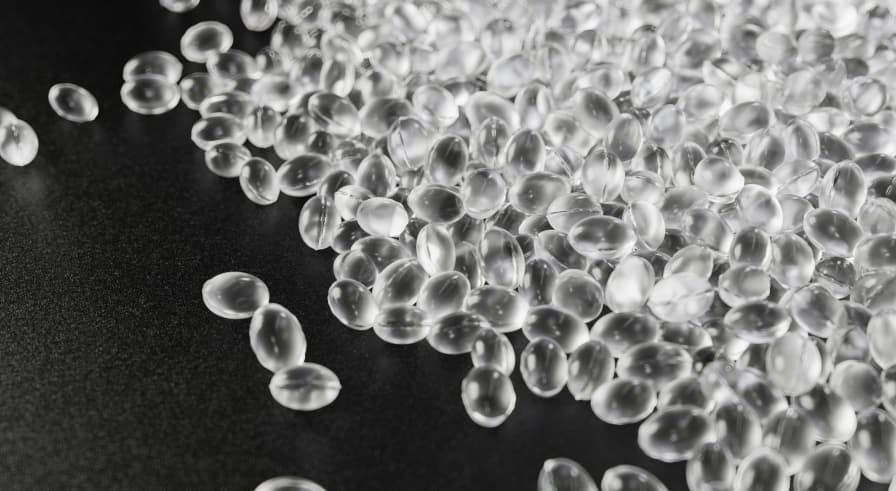
What happens if you eat microplastic?
If humans eat microplastic, it can cause toxic substances to enter our bodies – which in turn can result in gastrointestinal issues, damage to our DNA, and increase the risk of cancer.
💡 Despite the fact that we still remain unaware of the full effects of microplastic on the human body, new research indicates that consuming microplastic can cause oxidative damage – which can change our cell structure and impact our reproductive systems.
👉 It can be challenging to avoid consuming microplastic, seeing as humans ingest roughly 2,000 microplastics per year from salt alone – provoking people to wonder if they can remove the microplastics they have since consumed.
Can you get rid of microplastics in your body?
There is currently no surefire way to remove microplastic from the human body, and since it is difficult to test for levels of microplastic – as only 5 to 10% of blood concentration of microplastic is the true value of tissue levels. Therefore, it can be challenging to determine how much microplastic toxicity one has suffered.
Luckily, we can limit the amount of microplastic we consume by changing our eating and lifestyle habits.
Here are some ways you can reduce the amount of microplastic in your body:
- Donating Blood or Plasma – New research reveals that regularly donating blood or plasma may help to reduce the levels of Per- and polyfluoroalkyl substances (PFAS) in your bloodstream.
- Eating Healthier – Shopping at your local farmers market and avoiding single-use plastic packaging with food could help to reduce the consumption of microplastic.
- Reduce Your Plastic Consumption – This means switching to glass containers, reusable water bottles, and opting to purchase items that make use of sustainable packaging.
- Boil Tap Water – The American Chemical Society shared a report explaining that boiling calcium-rich tap water could help to remove up to 90% of microplastics in tap water.
👉 Accidentally inhaling or ingesting too much microplastic can cause the body to trigger an immune response, which can result in chronic pain or even particle toxicity – making it important to mitigating microplastic altogether.
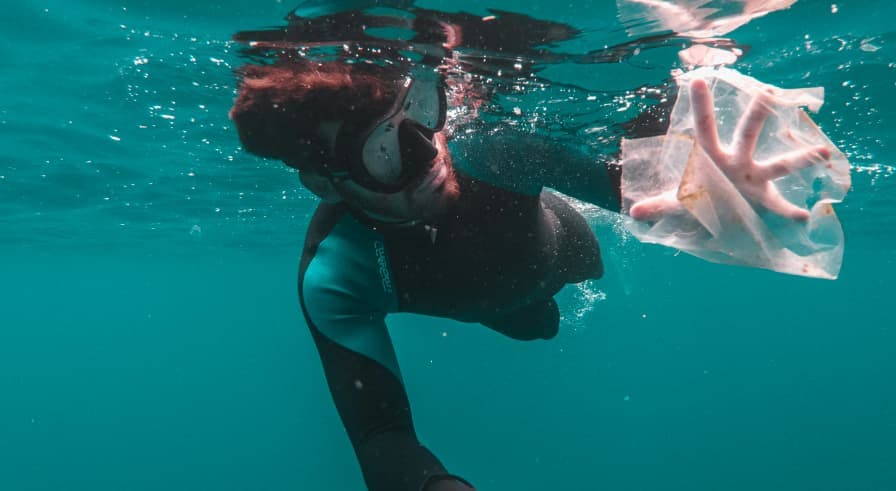
How can we reduce and avoid the harmful effects of microplastic?
There are several ways we can reduce the detrimental effects of microplastic, such as by increasing legislation to ban microplastic in products and by increasing funding for research to better understand how microplastic affects the human body.
💡 Microplastics will continue to spread toxicity amongst our wildlife, our environment, and even our own bodies – meaning it’s important to develop new mechanisms to avoid their destructive impact.
Here are some ways to avoid the harmful effects of microplastic:
- Increased Legislation on Microplastic – As the Netherlands was the first country to ban microbeads in 2014, many countries have since followed in their footsteps – such as Canada, Italy, Korea, New Zealand, and Australia. If more countries were to join in on banning microbreads, we could help to avoid both primary and secondary microplastic from accidentally being ingested or inhaled.
- New Research – One of the biggest concerns with microplastic is that we still don’t fully understand to what lengths it can have an impact on the environment, our ecosystems, and even our own bodies. If we were to increase funding for research for microplastic, we could possibly develop new, more efficient ways of avoiding their harmful effects.
- Encourage the Use of Biodegradables – As a global society, we still use more plastic than we should – but if we encouraged the use of more sustainable materials such as biodegradable packing materials, we could reduce the demand for single-use plastics and therefore significantly cut back on the production of primary microplastic.
Overall, microplastic is a serious issue that needs to be addressed in the midst of our fight against climate change – as if we continue to let microplastics run rampant, it could further contribute to our own downfall.

What About Greenly?
If reading this article on microplastic has made you interested in reducing your carbon emissions to further fight against climate change – Greenly can help you!
It can be overwhelming to figure out how to effectively reduce emissions in your business, but don’t worry – Greenly is here to help. Click here to schedule a demo to see how Greenly can help you find ways to ensure your company is reducing emissions as effectively as possible.
Greenly can help you make an environmental change for the better, starting with a carbon footprint assessment to know how much carbon emissions your company produces.
